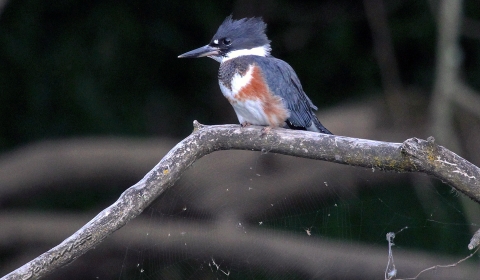Seasons of Wildlife
Waterfowl and neotropical migratory birds abound at Cibola National Wildlife Refuge during the spring and fall migration. Resident wildlife such as mule deer, Gambel’s quail, coyote, and burrowing owls can be found on the refuge year-round.
Featured Species
The refuge encompasses both the historic Colorado River channel, as well as a channelized portion constructed in the late 1960's. Along with these main water bodies, several important backwaters are home to many species of wildlife that reside in this portion of the Sonoran Desert. Because of the river's life sustaining water, wildlife thrives in this environment where temperatures reach 120 degrees in the summer and the average rainfall is two inches per year.
The lower Colorado River habitat is especially important for native fish like the razorback sucker, bonytail chub, and desert pupfish. Many of these native species have been displaced by exotic species of fish, making the refuge’s backwaters and lakes especially important. The refuge manages the native fish populations to ensure they successfully breed and prosper in Cibola Lake and the river.
The greenbelt of the Colorado River serves as an important migratory corridor for a host of birds making their thousand-mile journey through this area. Here, western and Clark's grebe chicks ride the backs of their parents as they cruise along a shoreline under the branches of cottonwood and willow trees, which serve as rookeries for great blue herons and egrets. The tall trees offer colorful migratory songbirds, like the vermillion flycatcher, a place to perch and watch for an insect meal. Ground dwelling birds like Gambel’s quail and roadrunners dart between river vegetation looking for cover from overhead predators in search of prey, specifically golden eagles and peregrine falcons. Elsewhere on the refuge, moist soil units and wildlife crops offer nutrient-rich tubers, grains and seedlings, which are important sources of winter food for Canada and snow geese.

